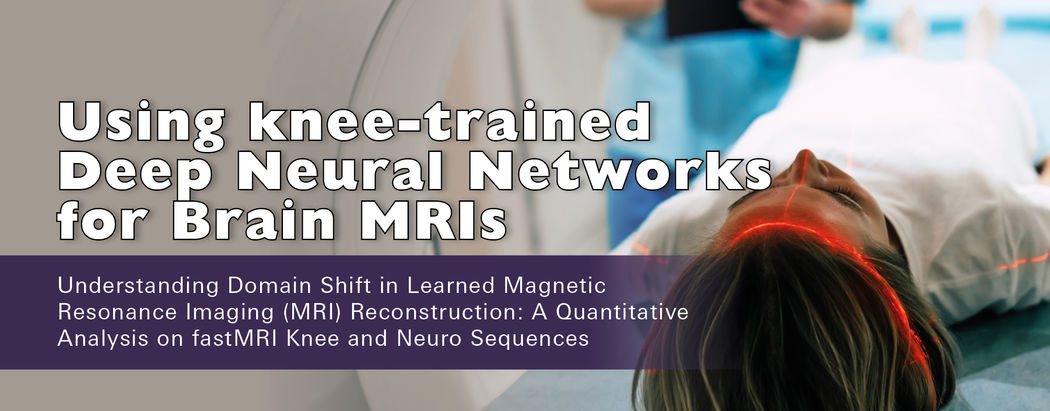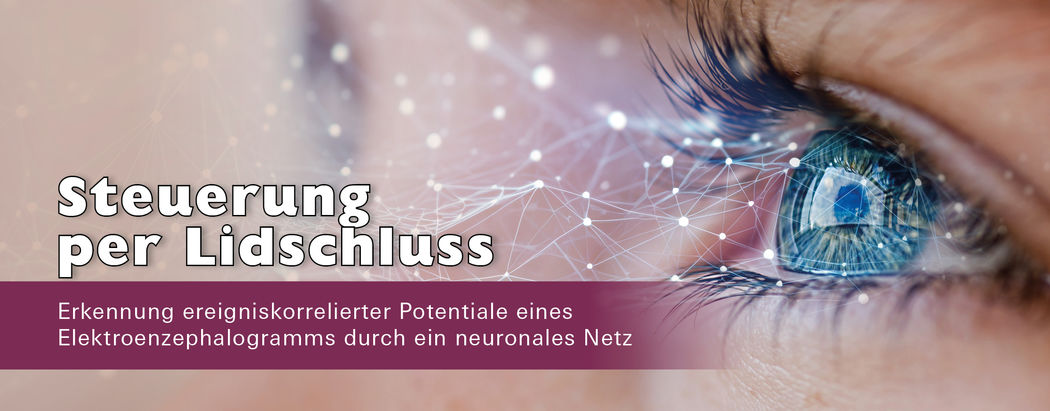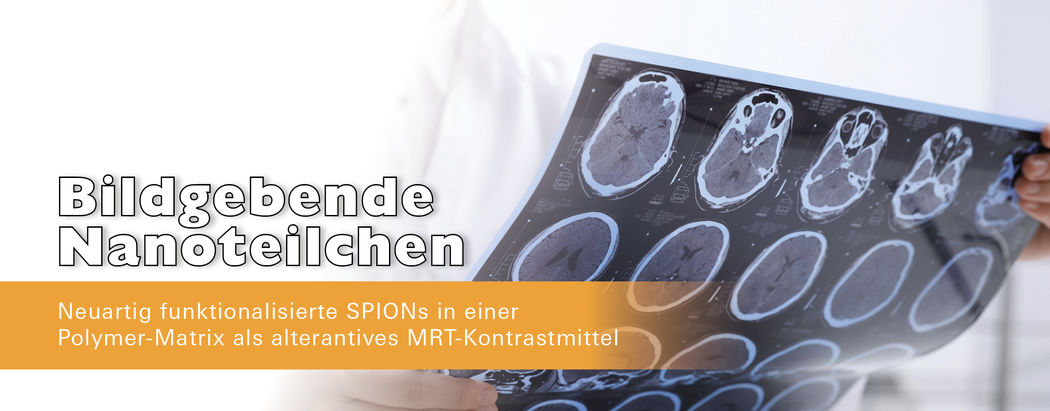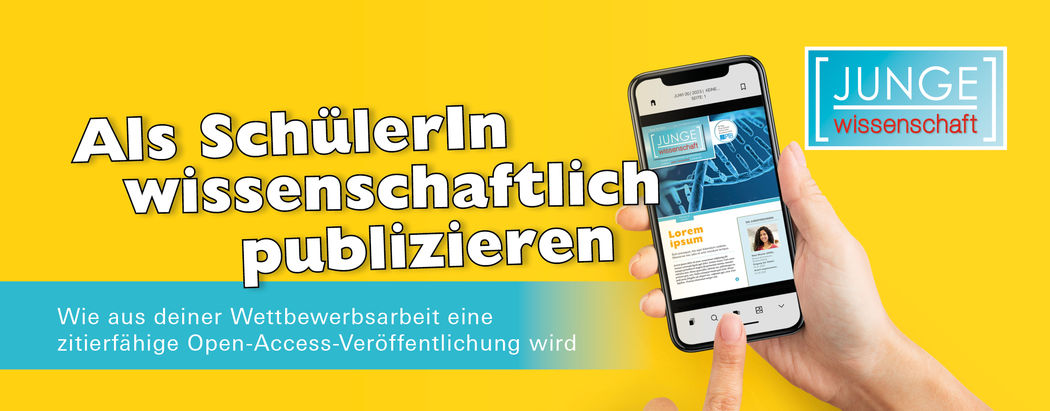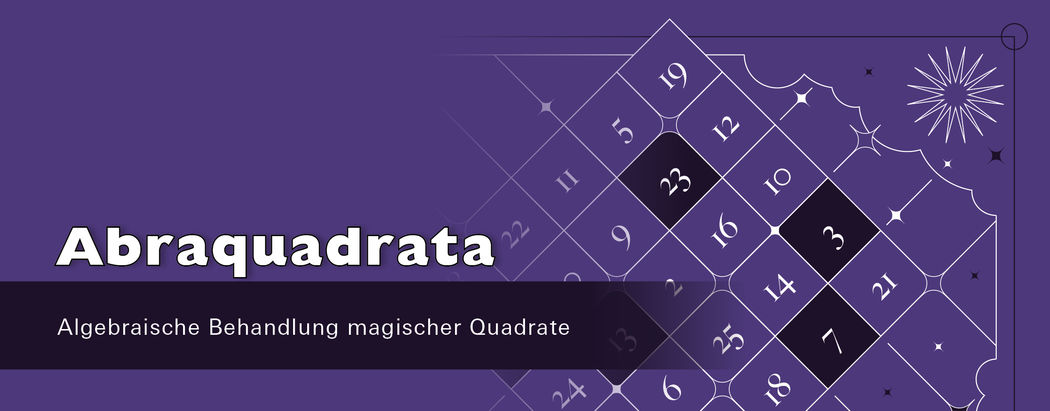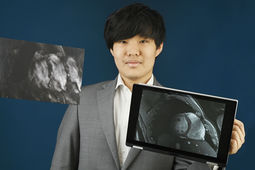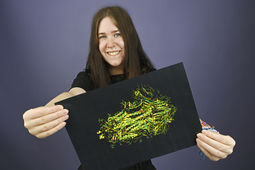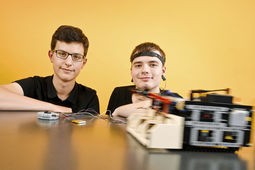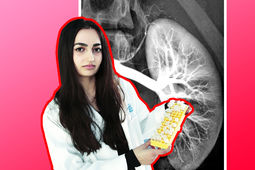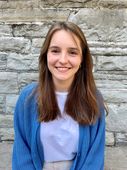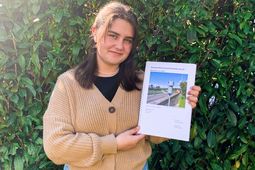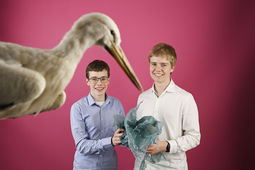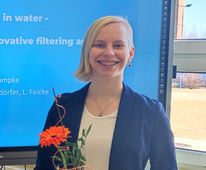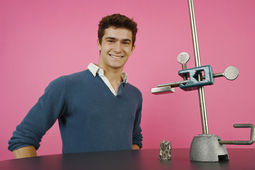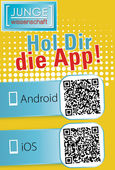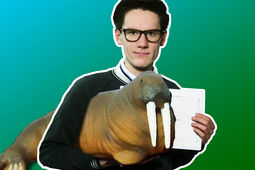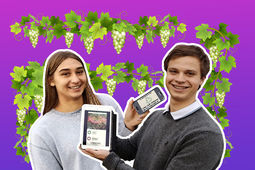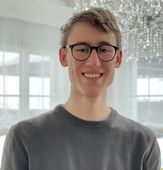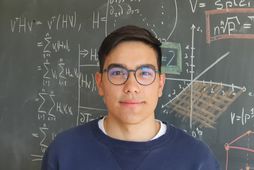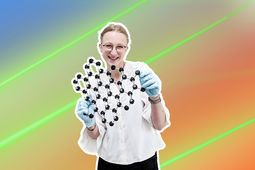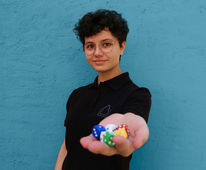Using knee-trained Deep Neural Networks for Brain MRIs
Shizhe He (*2004) | TUMKolleg, München | 01/2024
Understanding Domain Shift in Learned Magnetic Resonance Imaging (MRI) Reconstruction: A Quantitative Analysis on fastMRI Knee and Neuro Sequences
We investigate the problem of domain shift in the context of state-of-the-art MRI reconstruction networks with respect to variations in training data. We provide visualization tools and support our findings with statistical analysis for the networks evaluated on the 1.5 T/ 3 T fastMRI knee/neuro data. We observe that the signal-to-noise ratio of the examined sequences plays an essential role, and we statistically prove the hypothesis that both the type and amount of training data are less important for low acceleration factors.
Mutationen des SARS-CoV2 Virus auf der Spur
Lara Hombrecher (*2004) | Geschwister-Scholl-Gymnasium, Lebach | 09/2023
Visualisierung der Ähnlichkeit zwischen Sequenzen des Spike-Proteins aus benachbarten Ländern mithilfe der 3D-Struktur
Die Arbeit beschäftigt sich mit der Varianz der Virussequenz des Coronavirus anhand des Spike-Proteins in Deutschland und Frankreich. Dazu wurden die beiden Konservierungswerte der beiden Sequenzen verglichen und grafisch dargestellt. Es ließ sich feststellen, dass die Varianz der Sequenzen in beiden Ländern ähnlich hoch ist, ähnliche Stellen gut konserviert und somit für das Virus essentiell sind.
Steuerung per Lidschluss
Alexander Reimer (*2006), Matteo Friedrich (*2007) | Gymnasium Eversten, Oldenburg | 08/2023
Erkennung ereigniskorrelierter Potenziale eines Elektroenzephalogramms durch ein neuronales Netz
Wenn man ein Augenlid schließt, erzeugt dies eine bestimmte elektrische Aktivität des Gehirns. die mit einem Elektroenzephalographen (EEG) gemessen werden kann. Die so erhaltenen Daten werden mithilfe eines neuronalen Netzes ausgewertet, So kann der Lidschluß anhand der EEG-Daten erkannt und genutzt werden, um einen Roboter fahren und anhalten zu lassen.
Bildgebende Nanoteilchen
Aruna Sherma (*2001) | Stadtteilschule Walddörfer, Hamburg | 07/2023
Neuartig funktionalisierte SPIONs in einer Polymer-Matrix als alternatives MRT-Kontrastmittel
Das bei MRT-Untersuchungen verwendete Gadoliniumhaltige Kontrastmittel lagert sich im zentralen Nervensystem und Gewebe ab und erhöht so das Risiko für eine nephrogene systemische Fibrose. In dieser Arbeit wurde ein alternatives Kontrastmittel auf Basis von Nanopartikeln (SPIONs) mit einer Cross-linked-Polymer-Matrix hergestellt und spektroskopisch untersucht. Die Ergebnisse zeigen, dass es die Anforderungen erfüllt und teilweise sogar bessere Werte aufweist.
Abraquadrata
Luciana Marconi (*2001) | Realgymnasium Rämibühl, Zürich | 06/2023
Algebraische Behandlung magischer Quadrate
Magische Quadrate sind Zahlenquadrate mit der Eigenschaft, dass die Summen der Zahlen in jeder Zeile, Spalte und Diagonale den gleichen Wert annehmen. In dieser Arbeit wurden magische Quadrate algebraisch untersucht und dabei neun hinreichende Bedingungen für deren Entstehung gefunden. Diese Resultate verifizieren und verallgemeinern einerseits bekannte Einfüllmethoden und bieten andererseits den LeserInnen die Möglichkeit, eigene zu entwickeln.
Tire wear particles in the air
Geraldine Heuer (*2001) | Kantonsschule Wattwil, Kanton St.Gallen | 05/2023
Measurement and analysis of particles from tire abrasion in the air
This research aims to investigate if plastic particles can spread through the air. The focus was on tire abrasion particles. The particles were collected at three separate locations at different distances from a road for five months and analysed by light microscopy. The conclusion is that tire abrasion particles spread through the air and that the weather influences the dispersion of the particles.
Plastik in der Vogelnahrung
Armin Höcherl (*2006), Nikolaus Weiland (*2005) | Schyren-Gymnasium Pfaffenhofen | 04/2023
Untersuchung von Gewöllen von Weißstörchen, Eulen und Greifvögeln auf Plastik
Dass Vögel, die am Meer leben, Plastik als Nahrung zu sich nehmen, ist bekannt. Doch wie ist es bei Vögeln, die weit entfernt vom Meer leben? Um dies zu untersuchen, wurden unverdaute Speisereste, Gewölle, die zahlreiche Vogelarten nach der Nahrungsaufnahme auswürgen, gesammelt und seziert. In etwa einem Fünftel der Storchengewölle konnte Plastik nachgewiesen werden.
Removing Microplastics from Water
Antonia Lampke (*2005) | Regenbogen-Gymnasium-Augustusburg | 03/2023
Test of an Innovative Filtering Approach using Density Differences
Considering the indispensability of plastics worldwide, the impact of emerging microplastic on nature and additionally new findings on its existence in the human body, we need new approaches to remove it out of the potable water cycle. This paper investigates an innovative filtration approach using a new concept based on the well-known principles of density differences and phase separation of oil and water.
Stabiles Schweben
Carlos Steiner Navarro | Deutsche Schule Albrecht Dürer, Sevilla | 02/2023
Untersuchung der waagerechten und vertikalen diamagnetischen Levitation
Magnete können in den Magnetfeldern anderer Magnete schweben. Die große Herausforderung besteht darin, den schwebenden Magneten so in der Balance zu halten, dass er nicht herunterfällt. Um dies zu erreichen, wurde eine Graphitplatte dem Feld starker Dauermagnete ausgesetzt. Das rief in der Platte ein spezielles Magnetfeld hervor, mit dessen Hilfe sich ein kleiner Magnet zum beständigen Schweben bringen ließ.
Als SchülerIn wissenschaftlich publizieren
Sabine Siems (*1965) | PTB, Braunschweig
Wie aus deiner Wettbewerbsarbeit eine zitierfähige Open-Access-Veröffentlichung wird
In der Regel beginnt das studentische Leben nach der Einschreibung. Den universitären Alltag und die wissenschaftliche Praxis lernen Studierende dann Step by Step. Doch einen entscheidenden Schritt können erfolgreiche Jugend-forscht-TeilnehmerInnen und selbstständig forschende SchülerInnen schon vorher gehen: eine erste zitierfähige wissenschaftliche Arbeit veröffentlichen. Diesen Vorteil verschaffst du dir, indem du einfach deinen Wettbewerbsbeitrag noch einmal bei der Jungen Wissenschaft einreichst. Kostenlos für Dich, dank der Förderung durch die Physikalisch-Technische Bundesanstalt (PTB).
Hol Dir die App im Google-Playstore oder bei Apple!
Keine Langeweile mehr für Walrosse
Oskar Schwitters (*2003) | Gymnasium Hummelsbüttel, Hamburg | 01/2023
Der Zeitauffüllungsansatz für die Beschäftigung von Zootieren am Beispiel von Walrossen
Wenn Zootiere nicht ausreichend Beschäftigung haben, leidet ihr Wohlbefinden. Daher wurde ein Ansatz entwickelt und an Walrossen getestet, um diese durchgängig ausreichend zu beschäftigen. Systematische Beobachtungen belegen, dass sich die unbeschäftigte Zeit verringert.
Vine Leaf Disease and AI
Mario Schweikert (*2003) | Leibniz-Gymnasium, Neustadt an der Weinstraße, Maria-Theresa Licka (*2003) | Elisabeth-von-Thadden-Schule, Heidelberg | 10/2022
Detection of grapevine leaf diseases based on RGB-images, deep learning and its integration in a mobile application
This project enables early grapevine leaf disease identification on grape leaves by cell phone images, thereby allowing a precise usage of pesticides. The application is based on artificial intelligence (AI) which is trained to detect and differentiate the most common diseases. A continuous update of the extent and geographical location of disease spreading gives further valuable information to the winemakers using the application.
Making Music with Discharges
Maz Wegmüller (*2001) | Kantonsschule Wettingen | 09/2022
Development of an Audio Modulated Tesla Coil
A powerful high voltage generator was built that can produce discharges of about one meter. This high voltage transformer can be driven in such a way that audible pressure waves can be generated by the electrical discharges. Normal high-voltage measuring devices cannot be used for this sensitive system. Therefore, two measuring methods were developed.
Pooling to optimize mass testing
André Louis Gaël Mudry | ETH Zürich
Group Testing Protocols in Higher Dimensions to Combat the COVID-19 Pandemic
Most nations and their healthcare systems have been overwhelmed by the current COVID-19 pandemic. Strategies and measures to curb the spread of the SARS-Cov-2 virus require data on symptomatic infections, as well as asymptomatic carriers. Many countries, especially in the global south, lack the resources and infrastructure to conduct mass testing campaigns. In this paper a testing protocol is presented that significantly reduces the number of required tests while still exactly identifying infections.
Superflach und superfix
Tamara Pröbster (*2003) | Gymnasium Hilpoltstein
Ultraschnelle Emissionsprozesse in Graphen
Graphen emittiert durch die Laseranregung zeitgleich Elektronen sowohl thermionisch als auch photoelektrisch. Die theoretischen Vorhersagen für die thermionische Emission wurden mithilfe einer Computersimulation berechnet und in Experimenten verschiedene Abhängigkeiten des Emissionsstroms gemessen. Vor allem mit einer Zwei-Puls-Messung konnte ein tieferer Einblick in die Prozesse gewonnen sowie eine Zeitkonstante abgeleitet werden.
Die Würfel sind gefallen
Susann Janetzki (*2002) | Landesschule Pforta, Naumburg (Saale)
Strategieoptimierung des Spieles Qwixx durch maschinelles Lernen
Für das Würfelspiel Qwixx wurde eine KI entwickelt, die mittels eines evolutionären Algorithmus KI-Spieler trainiert und so eine starke Strategie findet. Dazu werden auch verschiedene Trainingsmethoden verglichen und bewertet. Auf diese Weise wurde ein KI-Spieler („AlphaQwixx“) gefunden, der mit menschlichen Spielern konkurrieren und höhere Punktzahlen erreichen kann.

